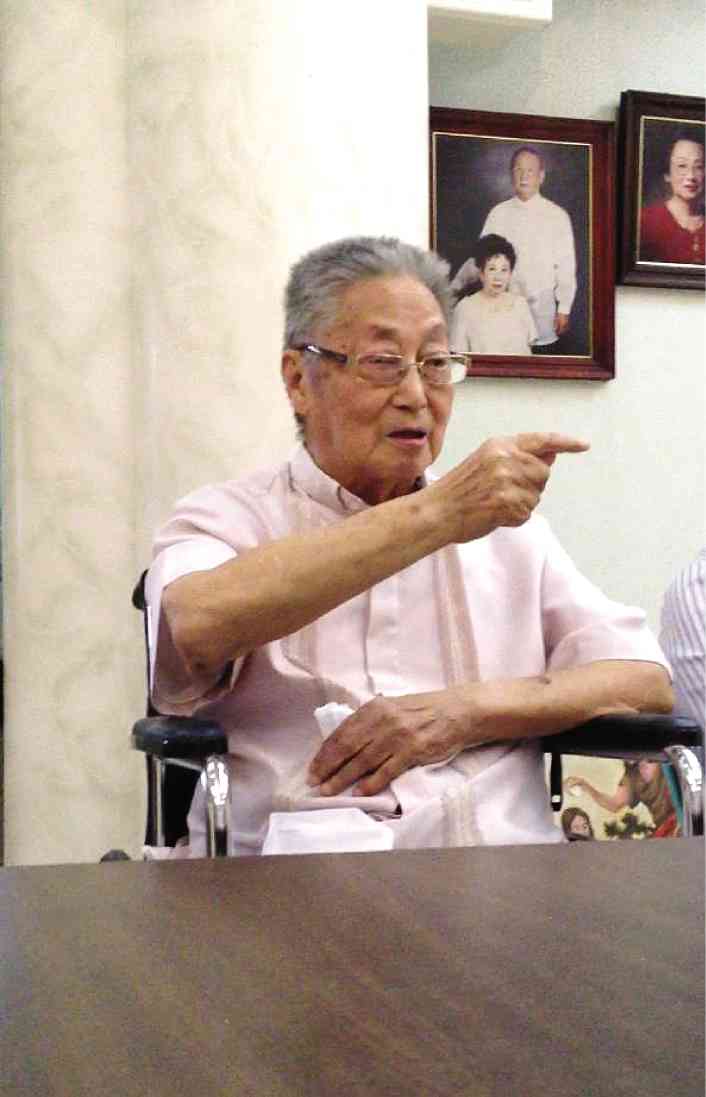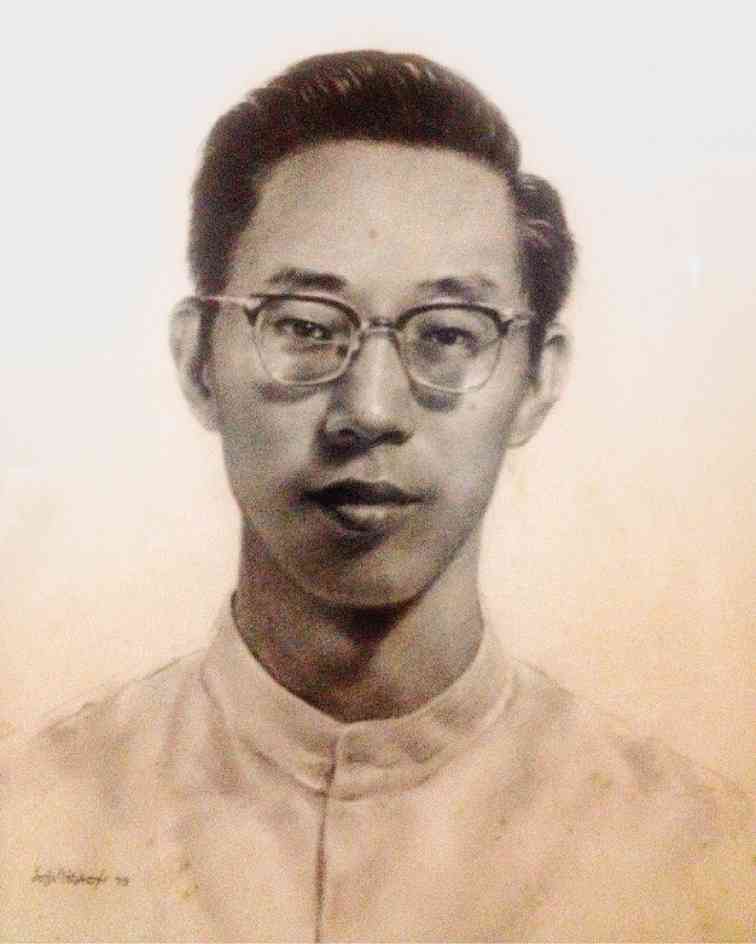The last patriarch of Hua Ming
John Su was a young seminarian from a Jesuit-run diocesan seminary in Hebei when he arrived in the Philippines in May 1949.
Deathly pale and haggard, wearing a worn-out white cassock, Su, with some 80 fellow seminarians, made a harrowing escape on a boat from China at the outbreak of the communist takeover of that country.
Under the new communist regime of Mao Zedong, Christian priests and missionaries were being persecuted.
Ten years later, with fellow refugee John Liu, Su founded St. John’s Institute (SJI), also known as Hua Ming, in Bacolod City in Negros Occidental. Today, the institute is one of the most prestigious Chinese schools in the country, tasked with the evangelization of the Chinese in the Philippines and the continuance of the enriching of the ancient Chinese culture among the Chinese-Filipino youth and their education in a modernizing world.
Invincible
Su kept alive this evangelization and education, with an invincible faith and spirit that made Hua Ming what it is today.
Hebei, where Su came from, is north of the Yellow River, a province larger than the entire Philippine archipelago. It was a vital Roman Catholic diocese then where roughly half of the country’s Catholics resided.
Su was born and grew up in Zai-hou-si in Hebei, in the big stone house of his father, a prosperous merchant. Su did not speak much, if at all, about what happened to his “bourgeois” father under the Red Army, although he kept in touch with his siblings.
Su must have felt safe at last when he and his companions were welcomed to the Hacarin Farms in Bulacan owned by industrialist brothers, Salvador and Ramon Vicente. Later they were brought to a former army and prison camp in Mandaluyong (now the site of the Ortigas Center) where St. Joseph Seminary was set up.
Su, with Liu and the other seminarians from St. Joseph, was ordained at Santa Cruz Church in 1955. He came to meet the Filipino faithful at the grassroots while helping in a small parish in Surigao and then in Tarlac.
Then, upon the request of Bishop Manuel Yap of Bacolod, Su and Liu headed to Negros to help set up a Chinese Catholic mission. It was Liu who, on the instruction of the bishop, persuaded Alfredo Montelibano to donate a half-hectare of the newly opened Capitol Shopping Center to the Chinese mission that needed more room.
The late Bishop Antonio Fortich said that nobody could resist Liu’s secret weapon: “His dimples.” Liu died four years ago.
With that much bigger space, the thinking inevitably went: How better to evangelize than through a school? Thus came to life, in 1959, the Hua Ming Catholic Mission School in Bacolod, which a year later was renamed St. John’s Institute.
The first classrooms of St. John’s were at a vacated marketplace in the shopping center.
SJI board of trustees president Dennis S. Coo, who was among the first students, remembers how people at the bus terminal beside the school jocularly imitated the sing-song cadences of the students as they recited their poems and sang their songs.
Planner and visionary
With Su as planner and visionary and Liu as builder, Hua Ming grew. (The name has stuck—ask a tricycle or taxi driver to take you to St. John’s and they would not know where that is.)
Su, who built Hua Ming’s academic curriculum, was known by the students as the “terror” of discipline.
“He was irascible and kept to himself,” says Lucy Ponce, a Chinese Catholic stalwart in Bacolod. “He was known for his long and unannounced absences from Hua Ming.” Nothing too
mysterious about his absences, though; these would be later explained by a trail of extraordinary work outside of Hua Ming.
In 1988, Su set up Lorenzo Mission Institute (LMI), a training and formative institute named for Lorenzo Ruiz, the Chinese-Filipino saint canonized in 1987, in the San Carlos Seminary compound in Guadalupe, Makati City.
A mission-oriented diocesan seminary reaching out to Chinese and Chinese-Filipino aspirants, it produced priests tasked to carry on the China mission.
“Monsignor Su went on recruiting missions all over the Philippines,” says Fr. Noly Que, LRMS, one of his recruits, now the administrator of St. John’s. “He was very selective, he didn’t invite just anyone to join his seminary.”
Pope John Paul II, when he visited the institute in 1995, commended it for “being truly Christian and truly Chinese, and [contributing] to the richness of the whole Church.”
Multiracial institution
Today Hua Ming has many, if not more, non-Chinese students than Chinese, including Germans, Norwegians, Indians, Spaniards and Japanese, in its kindergarten, elementary and high school levels.
Hua Ming was founded at a time when the Philippines was in the grip of a communist scare. Although the government was paranoid about letting into the country Chinese youths, albeit seminarians, fearing that they might have been indoctrinated by the communist army, Vatican diplomacy, at least on the matter of the Hebei refugees, dispelled that fear.
Later “nationalization” edicts meant to, among other things, curtail the influx of illegal entrants from the Chinese mainland, prescribed a strict curriculum for Chinese schools emphasizing “Filipino-ness.”
Hua Ming, with a Filipino board of trustees that made it a de facto Filipino school, showed that the study of Chinese culture and values was an important step in promoting greater understanding among peoples.
It has produced some of the finest sons and daughters of Negros, among them, marine biologist Terence Paul Dacles, state prosecutor Peter Ong, environmentalist Francis Joseph Jalandoni, diabetologist Patrick Angel G. Araneta, civic worker Jose C. Tan Jr., visual artist Charlie Co, educator Junie T. Go, peace and development educator Cesar Geronimo H. Villanueva, entrepreneur Vicenta Po-Rio, advertising media practitioner Caroline B. Ong and fish culturist Peter L. Uy.
Monsignor Su died at 89 on June 16. On his death, Marivic Rio, an alumna, said, “We are saying goodbye to an era for Hua Ming.”
(Editor’s Note: Abe Florendo wrote “Going Beyond Gold,” the Golden Jubilee book of St. John’s Institute, published in 2009.)
















